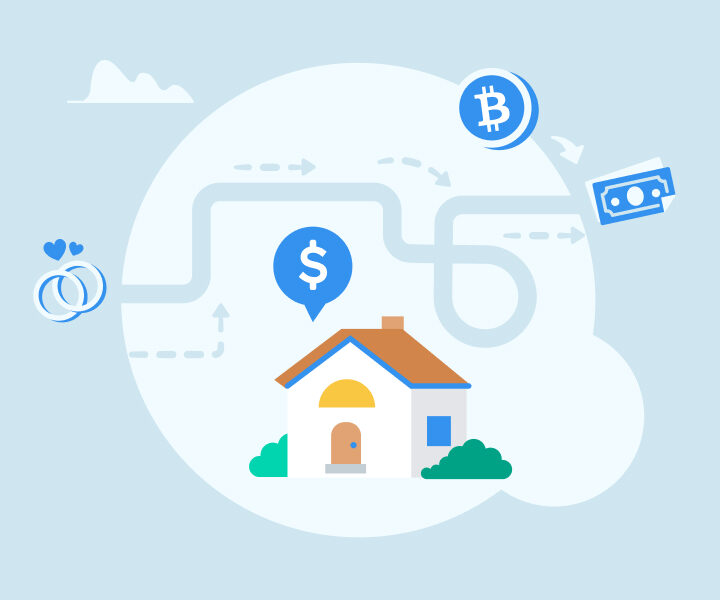What Is the Principal Residence Exemption and How Does It Work?
TurboTax Canada
February 5, 2025 | 6 Min Read
Updated for tax year 2025

The principal residence exemption is a crucial tax benefit for Canadian homeowners. Think of it as your financial superhero when it comes time to sell your house. Basically, it can seriously reduce or even zap away the capital gains tax you’d normally have to pay on the sale. That’s more money in your pocket!
Getting the hang of how this exemption works is super important. It’s not just about saving a few bucks; it’s about giving your financial health a major boost every time you sell a principal residence.
So, let’s dive in and break down everything you need to know about this nifty little perk when you’re selling your place and how it may impact you when you file your taxes.
Key Takeaways
- Claiming a principal residence exemption can eliminate capital gains tax on the sale of that property.
- The sale of a principal residence must be reported on Schedule 3 of the T1 Tax Return to leverage the exemption benefits.
- Changing the use of a principal residence may affect its exemption status.
What is a principal residence?
A principal residence is a housing unit that you own, either alone or with another person. Additionally, the property must be “ordinarily inhabited” by you, your spouse, or your children at some point during the year.
“Ordinarily inhabited” is a fancy way of saying you must live there. So properties that are purely investment properties (such as rentals or flips) do not qualify for the capital gains exemption. Gains on the sale of these properties may be considered business income or capital gains, depending on the length of time owned.
What is the principal residence exemption?
So, do you pay capital gains tax on your principal residence? The short answer is no. And this is because in Canada, when you sell your primary residence, you typically do not have to pay capital gains tax, due to the principal residence exemption.
A capital gain happens whenever you sell property for more than you paid for it. The difference between what you paid and what you sold the property for is a capital gain. The principal residence exemption allows you to exclude the capital gain from the sale of your home from your income.
Provided the property qualifies as your principal residence, the profit earned on the sale of your principal residence is sheltered from tax. There are certain conditions and requirements to be aware of.
For starters, you’ll need to prove you live in the dwelling and make sure you fill out Schedule 3 when you file your tax return. Don’t worry, we get into the nitty-gritty of whether your property qualifies as a principal residence next.
How to prove primary residence in Canada
Proving your primary residence in Canada involves demonstrating to the Canada Revenue Agency (CRA) that a particular property is your main dwelling. To do this, you’ll need to provide evidence that shows consistent and substantial ties to the residence in question.
In order to show the property is your principal residence, you’ll need to provide documentation that:
- lists your address
- demonstrates that you’ve lived at this location for some time during the year (even a short duration may be acceptable).
The documents can include your driver’s license, provincial or territorial health-care card, and vehicle registration, all of which should feature your current address.
Utility bills, property tax receipts, and insurance documents for the home can also designate that it’s your principal residence. Further, records of your day-to-day life, such as employment records, school enrollment documents for children, or even a history of local purchases, can reinforce the designation.
You don’t need to submit these details with your tax return, but you’ll need to have them handy in case the CRA asks to see them.
Reporting the sale of your principal residence
In 2016, the CRA made significant changes to the reporting requirements for the sale of a principal residence. Now, every sale of a principal residence must be reported on your income tax return to claim the exemption. Here’s how to do it:
- Gather your documents. Before you start, make sure you have all the necessary documents, including the purchase and sale documents that show the value of your property. Other documents include copies of your identification, any bills that show your address, and Form T2091, the form where you calculate the exemption.
- Fill out Schedule 3. This form is part of your tax return and is specifically for reporting capital gains or losses. Schedule 3 calculates the amount of capital gain you have when you enter the purchase and sale values for your property. You’ll also need to include the date you purchased the property.
- Make the principal residence designation. If the property was your principal residence for every year you owned it, indicate this on Schedule 3 by ticking the appropriate box on page 2 of the schedule. This step is crucial for the exemption.
- Calculate the exemption. If you’re eligible, the capital gains tax will be reduced or eliminated based on the number of years the property was your principal residence.
More information about completing Schedule 3 for real estate can be found on the CRA website.
Calculating the principal residence exemption using Form T2091
Understanding how to calculate the principal residence exemption can seem a bit tricky at first, but it’s pretty straightforward once you break it down. Let’s look at two different scenarios using Form T2091 to see how the exemption can either reduce or completely eliminate your capital gains tax.
Example 1: Complete elimination of capital gains tax
Suppose you bought a house in 2000 for $200,000 and sold it in 2020 for $600,000. That’s a capital gain of $400,000 ($600,000 – $200,000) over 20 years. If this house was your principal residence for every single year you owned it, the entire $400,000 capital gain is exempt from tax.
Example 2: Reduced capital gains exemption
Now, let’s say your brother bought a lakeside property in 2010 for $300,000, which was his primary residence. Then your brother married five years after purchasing the property. As a couple, they decided to buy a new home together in the city that became their primary residence but held on to the lakeside property for five more years. In 2020 they were able to sell it for $500,000, realizing a capital gain of $200,000 ($500,000 – $300,000 = $200,000).
The capital gains exemption is calculated like this:
Principal Residence for 5 out of 10 years = 50% exemption.
Exempt Capital Gain = 50% of $200,000 = $100,000.
Taxable Capital Gain = $200,000 – $100,000 = $100,000.
So, in this case, currently half of your brother’s capital gain ($100,000) is exempt from tax, and the other half ($100,000) is subject to capital gains tax.
What is a change in use of principal residence?
A change in use occurs when you transform your principal residence into an income-producing property, such as changing it to a rental. The property is no longer your principal residence, and a deemed disposition occurs.
Deemed disposition is a term the CRA uses to note the change in use of your property. Even though you didn’t actually sell the property, for tax purposes, it’s as if you sold the property at its fair market value (FMV) and then reacquired it in order to rent it. This can have significant tax implications since the FMV at which the property is deemed disposed is now the adjusted cost base that’s used to calculate any capital gains when the property is sold or changed back to a principle residence.
It’s also possible—if certain conditions are met—for a taxpayer to “elect” to maintain the principal residence status on a property that is now being rented.
What if you don’t report the sale of your principal residence?
Failing to report the sale of a principal residence can lead to penalties and an indefinite period for reassessment by the CRA. The late-filing penalty is the lesser of $8,000 or $100 for each complete month the return is late, and the CRA can reassess your taxes at any point if you don’t report the sale of your principal residence. Generally, the CRA recommends keeping your tax documents for six years to help reconcile any past issues. Avoid penalties and get peace of mind by having a TurboTax expert perform a final review of your return before you file your tax.
Your taxes done right, any way you choose
File on your own, with live help, or hand your taxes off to an expert. With TurboTax Full Service, you can have a tax expert prepare, review, and file your return from start to finish.
Get StartedWhat is a principal residence?
What is the principal residence exemption?
How to prove primary residence in Canada
Reporting the sale of your principal residence
Calculating the principal residence exemption using Form T2091
What is a change in use of principal residence?
What if you don’t report the sale of your principal residence?
Related articles

© 1997-2024 Intuit, Inc. All rights reserved. Intuit, QuickBooks, QB, TurboTax, Profile, and Mint are registered trademarks of Intuit Inc. Terms and conditions, features, support, pricing, and service options subject to change without notice.
Copyright © Intuit Canada ULC, 2024. All rights reserved.
The views expressed on this site are intended to provide generalized financial information designed to educate a broad segment of the public; it does not give personalized tax, investment, legal, or other business and professional advice. Before taking any action, you should always seek the assistance of a professional who knows your particular situation for advice on taxes, your investments, the law, or any other business and professional matters that affect you and/or your business.








